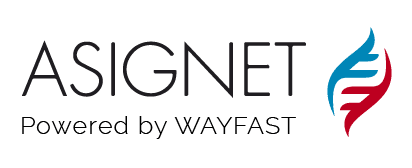One of the most important components for a business to control costs in relation to telecommunications is asset management, and IT asset management software can help to simplify that. These devices are constantly being used by customers, employees, or other third parties to conduct business with your company. The quality of asset management plays an integral part in how well your company can run efficiently and profitably. Telecom-specific software solutions provide extensive insight into how these assets are being used which will help you make better decisions about what needs to be done to control spending. Here are some features that should be included in a good telecom asset management software:
What is Telecom Asset Management Software?
Assets are the foundation of any company, and especially so if it is asset-intense. In organizations that are asset-intensive, accurate tracking of asset-specific data throughout the lifecycle is critical to achieving productivity, efficiency, and cost control. Telecom asset management software allows organizations to gain complete visibility of their assets, their lifecycle, and activities. Using Telecom Asset Management software, you may create an electronic inventory of your telecom items and model the connections between them.
Benefits of Telecom Expense Management Software
With increased competition, reduced overhead costs, and fewer capital expenditures from the COVID-19 recession, now is a good time to start utilizing those methods. Using tools like telecommunications expense management (TEM) to manage their current communication and collaboration network as well as their entire technology platform enables businesses to maintain operations while cutting expenses without sacrificing production. One of the benefits of telecom expense management software is that it provides them with a clear picture of all the company’s communication and collaboration tools, including how they are used and the consumption of the services attached. It should provide users with an accurate assessment on what features need to be enabled, disabled, or phased out as well as those which could still be used but because of certain circumstances such as financial constraints must be reprioritized.
In addition, a good telecom expense management software should also provide insight into the company’s overall technology platform in terms of how it is configured and used. This would help reduce costs associated with deploying new technologies which can be very expensive especially if they are not necessary for business operations. Having an accurate picture of your current IT infrastructure will also help ensure that your company is not wasting money on technologies that are no longer needed or might even be obsolete.
Another benefit of telecom expense management software is the ability to review and compare different usage trends, including bandwidth consumption at each site or building so you can figure out how much capacity is required for specific applications as well as who uses them most. It should also enable you to identify which sites have the highest amounts of traffic and users so that they can be prioritized for infrastructure expansion or upgrades. You will also know when your current connections are being stretched too thin, allowing you to start planning a replacement before it fails completely.
Common Features of Telecom Expense Management Software
There are several functions they must accomplish this difficult process, but the following are the top five most requested telecom asset management program features :
#1: Centralization
Centralizing management and automation of all your telecom assets, services, users, and contracts. This should be a one-stop-shop for managers to keep track of the status of their entire CMDB without having to jump from system to system or department to department. Efficiencies are then gained by allowing business leaders to take immediate action on any issues instead of waiting for a report to be generated. In addition, the telecom expense management software should also enable managers to quickly see which assets are underutilized or being used inefficiently so they can take action and correct them before they have an adverse effect on overall operations.
#2: Integration
Telecom asset management solutions need to integrate with existing systems that managers are using to not only improve efficiencies but also reduce costs. This includes data from all departments including finance, IT, and telecoms so they can have a clear picture of where their budget is going as well as how it’s being used. In addition, this will allow them to make better decisions on what technologies or services should be deployed when the company has to make budget cuts. The deeper the integration, the better. Most advanced telecom expense management solutions will provide integrations that allow companies to track the hardware up to the port and circuit level.
#3: Technology Assessment
Telecom asset management solutions should provide organizations with a clear picture about the technologies savings and cutting edge solutions that can save money, like SD-WAN or unified communication as a service (UCaaS). Some telecom asset management software vendors even include warranty checking protocols, so your technology assessment has 100% coverage.
#4:Cost Transparency
The telecom expense management software must provide accurate and up-to-date details about each asset’s cost involved with owning it as well as any recurring charges associated with its use such as network fees, maintenance costs, and service-related expenses. This information should be available to managers as well as finance teams so they can determine which assets or services are more costly than others and then make better budgeting decisions for the year ahead. Also checking those expenses against the contracts and invoices that the vendors provide is a key feature of these vendors.
#5:Single Platform
An integrated telecom asset management solution is preferred over a system where each department has its own piece of software because it takes less time to deploy updates and changes, and is more cost-effective because IT doesn’t have to manage multiple systems at once. Managers are also able to get reports faster while the finance team can see how much money was saved or recouped through upgrades or efficiencies.
The telecom expense management software should also provide a way to manage other IT assets, like cloud services, software licenses, and mobile devices and plans.
Contact us today for more information about how we can help your organization save money and increase efficiency in managing your telecom expenses.







